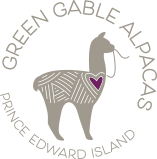Step into my dye studio and you’ll find a world of colour in motion. Pots of water steaming on the cookers. Skeins of bare yarn soaking, ready to drink up the dye. Shelves crowded with jars of powdered colour - my painter’s palette in a different form.
It can look chaotic. Heck, it often feels chaotic… but it’s a happy place, and it’s where I spend a lot of my time.
Hand-dyeing yarn is part science, part art, and part instinct... and all joy. Some days it’s careful measuring and repeatable formulas. Other days it’s chasing a feeling, mixing and layering until the colour in my mind finally appears in the pot.
My Colour Philosophy
My colour inspiration often starts with something I’ve experienced. Photos I’ve taken, places I’ve been, or even images I’ve stumbled across that just make me happy. Sometimes it’s a memory I want to capture in yarn form, like the windswept cliffs and deep ocean blues of Cabo de Roca in Portugal. Other times it’s a softer moment, like the gentle greens and rich purples of my favourite Calla Lily, inspired by the flower’s graceful curves and striking contrast of colour.

When I first started dyeing, I was like many beginners; I experimented with Kool-Aid and Wilton’s food dye. From there I graduated to commercial dyes, but I still used them straight out of the jar and applied the colours a bit randomly.
Over the years, my approach has grown more sophisticated. I’ve developed my own techniques for creating and applying colour, and I rarely design a single colourway at a time. More often, I work in trios - three harmonious colours that complement each other and can be used together in a project, like Cabo de Roca, Cork Oak, and Coasta.

A colourway can also be sparked by something smaller: the way the morning light hits the pasture, the pattern of lichen on a rock, or a combination of shades in a knitted sweater that catches my eye.
My Tools of the Trade: Acid Dyes
I work with acid dyes. Despite the name, there’s nothing harsh or hazardous about them. They’re specially made for protein fibres like alpaca, wool, and silk, and the “acid” is simply household vinegar or citric acid.
Why acid dyes? Because they give me vibrant, colourfast results while being gentle on the fibre. They let me capture the exact shade I’m imagining and repeat it when a customer falls in love.
And while you can buy a whole rainbow of dye powders straight out of the jar, most of my colourways aren’t “out of the box.” I work almost exclusively with just four base colours - turquoise, fuchsia, yellow, and black - and adding a sprinkle of this or that... blending and layering to create a custom spectrum that’s entirely my own.

Some dyers work with plant-based dyes, which is its own beautiful craft. I choose acid dyes because they suit my goals: precision, repeatability, and the ability to showcase the alpaca fibre I work with at its very best.
Small-Batch Magic
All of my yarns are dyed in small batches - never more than five skeins in a pot - which means no two skeins are ever exactly alike. That uniqueness is part of the charm of hand-dyed yarn, adding depth and character to your finished piece.
If your project calls for more than one skein, I always recommend alternating skeins every few rows. It blends those subtle variations beautifully and helps prevent colour pooling, turning what could be a challenge into one of the special qualities of working with hand-dyed fibre.

The Variegated Difference
Solid colours are fairly straightforward, but for me, my variegated yarns are where the magic really happens. I’ve developed my own application techniques for layering, shifting, and blending colour so each skein has movement and depth.
It’s a little like cooking without a recipe... you need to know when to let colours mix and when to keep them apart. That knowledge comes from experience, instinct, and a lot of time standing over steaming dye pots. Oh, and notes... really, really good notes!
A Labour of Love
Every skein passes through my hands multiple times. From soaking the bare yarn to setting the final colour. It’s work that takes focus, patience, and a willingness to let the process surprise me. There’s nothing quite like pulling a skein from the rinse water, watching it glow in the light, and knowing it’s ready to become part of someone’s handmade story.
Every story begins with a herd of individual alpacas... each with its own quirks, temperament, and fleece. Some are right here in my pastures, others come from trusted small producers, but each skein represents years of planning and care before it ever reaches my dye pots.

So, while I may not be foraging for plants or stirring indigo vats, every colourway I create still carries a story... rooted in something that’s left an impression on me, shaped by my creative process, and infused with a whole lot of care.
If you’d like to see that process up close, you can explore our hand-dyed yarn collection or join me at the farm for a dye workshop where the alpacas keep watch from the pasture, and colour is always in motion.


Cecile Haley
I bought 4 skeins of the valley purl colorways last year at the PEI festival. Because I bought 4 different colors still trying to decide what to make. Maybe a striped sweater?.. so every once in a while I pick up the yarn to feel its softness and beauty and dream of what it could be! Once I decide I might need to order more but can’t wait to be wrapped in it! If you have ideas for shawl patterns or what others have done that would be great!